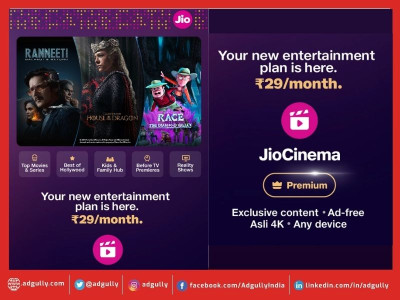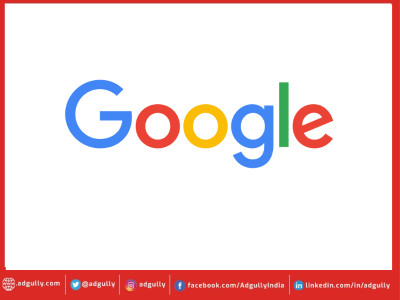Google’s TrueView under the scanner: Lack of transparency from Google, say experts
A recent report by Adalytics has raised concerns about the misalignment between Google’s TrueView skippable in-stream video ads and the actual delivery experienced by advertisers. The report suggests that advertisers, including Fortune 500 brands, the US federal government, and numerous small businesses, may have been misled for years about the nature of TrueView ads. This misalignment may have led to the misallocation of billions of dollars in digital ad spending.
TrueView is Google’s proprietary ad format that allows advertisers to pay for actual views of their ads rather than impressions. However, the research report reveals that significant quantities of TrueView skippable in-stream ads were served on websites and apps that did not meet Google’s quality standards. Many of these ads were muted, auto-playing as out-stream videos, or appeared as obscured video players on independent sites. The report highlights the misallocation of ad budgets to the Google Video Partner (GVP) network, where many placements did not adhere to the TrueView or skippable in-stream ad format.
The Adalytics report’s findings have sparked discussions about Google’s monopoly in the digital advertising market and the need for alternative publisher options. To know more about the concerns and issues that advertisers have and how this can be resolved, Adgully reached out to a cross-section of industry experts to understand the entire dynamics in a better manner.
Nikita Bhate, Senior Business Director - Digital Integration Strategy at Chimp&z Inc, pointed out that the report indicates a significant misalignment between Google’s stated quality standards and the actual delivery of TrueView skippable in-stream ads.
Nikita noted, “The report indicates that a substantial number of TrueView skippable in-stream ads were served on websites and apps that did not meet Google’s stated quality standards. This includes ads being muted, auto-playing as out-stream video, or appearing as obscured video players. Advertisers expected their ads to be skippable, audible, and initiated by viewer action, which was contrary to what was observed in many cases.”
The Adalytics research report reveals that a significant portion of ad budgets for TrueView skippable in-stream ads was spent on the Google Video Partner (GVP) network, which consists of numerous third-party websites and mobile apps. However, Nikita stated, “The majority of these placements did not adhere to the TrueView or skippable in-stream ad format. Advertisers may have unknowingly allocated their budgets to placements that did not meet their expectations or provide the intended reach and engagement.”
She also shared that the advertisers have expressed that they would not have purchased TrueView skippable in-stream inventory on third-party environments if they had been aware of the issues highlighted in the report. “This indicates a lack of transparency from Google, as advertisers were not provided with clear information about the placements and the discrepancies between stated standards and actual execution,” she noted.
The report suggests that the quality issues with TrueView skippable in-stream placements, such as muted or auto-playing ads, may have negatively affected the effectiveness of the ads. Nikita added, “Advertisers expect their video ads to be engaging, audible, and in compliance with industry standards. The inconsistencies identified in the report raise concerns whether the ads delivered the desired impact and whether the reported completion rates accurately reflect user engagement.”
“If the allegations in the report hold true, advertisers may have incurred significant financial losses. The misalignment between what advertisers believed they were purchasing and the actual delivery of TrueView skippable in-stream ads may have resulted in the misallocation of ad spends, potentially costing media buyers’ billions of digital ad dollars,” she concluded.
Google maintains dominance in the adtech market by exerting control over both the buying and selling aspects. Prominent brands and publishers widely assert that engaging in Internet advertising transactions without relying on Google’s products has become extremely difficult or nearly impossible. Presently, Google holds authority over advertisers who display ads on its search platform, as well as manages the auction process for securing ad placements on publisher websites.
Ambika Sharma, Founder and MD, Pulp Strategy, emphasised the dominance of Google in the digital advertising market. “Google controls the majority of the world’s digital advertising inventory, and it is the only major player that offers a truly global reach. This means that advertisers have little choice but to use Google’s platform if they want to reach a large audience,” she added.
Sharma noted, “While Google’s monopoly has some benefits for advertisers, it also has some drawbacks. For example, Google has been accused of using its monopoly power to extract higher prices from advertisers. Additionally, Google’s control over the digital advertising market makes it difficult for new competitors to enter the market.”
“As for whether advertisers have full control over ad displays, the answer is no. Google has a great deal of control over where and how ads are displayed. Advertisers can choose to target their ads to specific demographics and interests, but they cannot control the specific websites or apps where their ads will appear,” said Sharma.
Invalid traffic is indeed a persistent issue in the digital ecosystem, but there are several steps that can be taken to tackle this effectively.
- Implement Traffic Verification Tools: Utilise tools and services that detect and filter out invalid traffic through IP filtering, device fingerprinting, and user behaviour analysis.
- Adhere to Industry Standards: Follow industry standards outlined by organizations like the Interactive Advertising Bureau (IAB) and the Media Rating Council (MRC) to combat invalid traffic.
- Bot Detection and Prevention: Deploy robust bot detection and prevention mechanisms that leverage advanced algorithms and machine learning techniques to analyze traffic patterns and identify anomalies indicating bot activity.
- Ad Fraud Monitoring: Implement ad fraud monitoring systems that continuously analyze metrics to detect irregularities or suspicious patterns.
- Collaboration and Information Sharing: Foster collaboration among industry stakeholders to collectively combat invalid traffic through the sharing of insights and information.
- Regular Auditing and Reporting: Conduct regular audits, performance reviews, and site visits to assess traffic quality and verify compliance.
According to Ramya Ramachandran, Founder CEO of Whoppl, “Invalid traffic is a well-known problem in the digital ecosystem, and it is not exclusive to Google or its Meta platform. A possible solution could involve implementing a verification service to enhance accuracy, although identifying the best approach is challenging.”
As the field of digital advertising undergoes constant changes, it is crucial for marketers to venture into diverse platforms and conduct experiments to discover the optimal blend that aligns with their specific objectives, target audience, and financial resources. By expanding their advertising endeavors beyond Facebook and YouTube, companies can harness the distinct advantages offered by each platform and enhance their reach and effectiveness in the ad view business.
Ramachandran noted that various platforms like YouTube, Facebook, Instagram, and others play a significant role in online advertising. “Instagram and Facebook, being under the same ownership, offer substantial advertising opportunities. Additionally, Snapchat has emerged as a platform where brands can promote ads. Furthermore, LinkedIn and Twitter are also viable spaces for advertising, presenting alternative avenues to explore,” she added.


















Share
Facebook
YouTube
Tweet
Twitter
LinkedIn